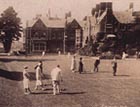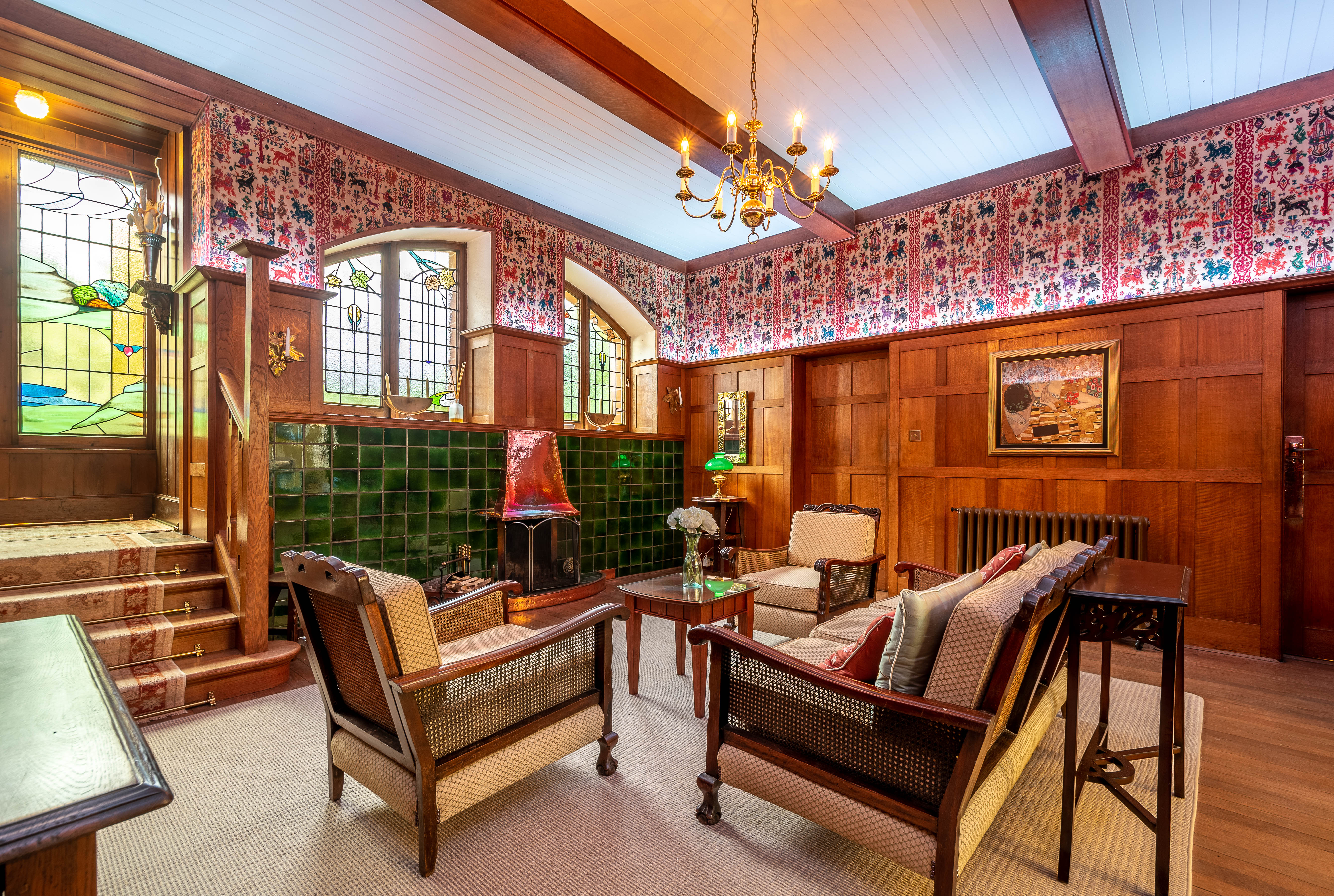Economies of Scale
Sumptuous country living is within reach at these two grand estates


When, in 1880, Henry Leigh Townshend built stately Caldecote Hall on his historic 1,200-acre estate near Nuneaton, Warwickshire, at a cost of £80,000, every inch of the vast Victorian mansion reflected the self-made millionaire?s dream of living the life of an English country gentleman. Sadly, despite his best efforts to ingratiate himself with the local gentry, Capt Towns-hend was never fully accepted by them, and is reputed to have died an unhappy man?whereupon, his heirs decided to break up and sell off the estate, and in 1924, it was sold at auction in 24 lots.
The Hall and its surrounding 35 acres were bought by the Church of England Temperance Society, as a retreat for the treatment of ?Neurasthenia and other Nervous Ailments resulting from Mental Strain, Drugs and Alcohol Addiction?
The original visitors? book shows a steady stream of rich patients coming to enjoy the restorative pleasures of the house and grounds as well as the expert treatment provided. However, the discovery of three truckloads of ?empties? in the attics when the clinic eventually closed suggests that the detoxification programme was less successful in some cases than in others.
In 1953, Caldecote Hall was bought by Cyril Colbourne, a property deve-loper, who let the main part of the building to St Chad?s school. By 1955, however, the school principal was heavily in arrears with the rent, and on April 27 1955, the local press announced that the Hall was back on the market at £15,250.
The following day, the same newspapers headlined the story of a mysterious fire which swept through the main hall, destroying its roof and seriously damaging many of its rooms; the indebted principal disappeared, never to be heard of again. Unable to meet the heavy cost of restoration, Cdr Colbourne retreated to an apartment in the east wing of the Hall, sealing off the damaged west wing which has remained untouched since.
But now, having bought Caldecote Hall in November 2003 and almost com-pleted the conversion of the 23,000sq ft east wing into luxury one, two and three-bedroom apartments?for sale through Savills (0115?934 8020) and local agents Hawkins (024?7637 4949) at prices ranging from £165,000 to £325,000?intrepid developer Peter Bradley is set to embark on the restoration of the 18,000sq ft west wing, with its magnificent main hall and minstrel gallery. It will be converted to nine sumptuous apartments, ranging in size from 700 to 1,700sq ft, where 21st-century technology will enhance the ?opulence and decadence? of Capt Townshend?s original vision.
The final stage of restoration at Caldecote Hall will be the conversion of the 11,000sq ft stable courtyard into a further 10 apartments. And with 35 acres of secluded landscaped grounds to wander in, the next generation of residents may soon feel more at home in the Warwickshire countryside than poor Capt Townshend ever did.
Sign up for the Country Life Newsletter
Exquisite houses, the beauty of Nature, and how to get the most from your life, straight to your inbox.
Another country house with plenty of rooms to spare (some 25 in all) is rambling St Joseph?s Hall in the picturesque West Sussex village of Storrington. The home of the Roman Catholic Bishop of Arundel and Brighton since 1965, the 11,250sq ft Arts-and-Crafts-style house was built for the American impresario George Trotter in about 1910, when it was called Gerston House. In 1919, the property was sold to Philip Henderson, and later acquired by a French religious order, the Norbertines; during the Hun-garian rising of 1956, it was home to
a number of refugees.
But harsh economic reality has prevailed, and St Joseph?s Hall, listed Grade II, is on the market again, through Cluttons (01903 882213) at a guide price of £2.5 million. The asking price reflects the magnificence of its setting?17 acres of wooded parkland at the foot of the South Downs, looking out towards Chantry Hill?as well as the amount of work needed to upgrade the house to modern standards of lay creature comfort. Yet despite years of institutional use, the building, with its vaulted entrance hall, magnificent fireplaces, elegantly propor-tioned rooms and old-fashioned service wing and cottages, has retained much, if not all, of its original Edwardian charm.
This article was originally published in Country Life magazine, August 4, 2005. To subscribe click here.
Country Life is unlike any other magazine: the only glossy weekly on the newsstand and the only magazine that has been guest-edited by HRH The King not once, but twice. It is a celebration of modern rural life and all its diverse joys and pleasures — that was first published in Queen Victoria's Diamond Jubilee year. Our eclectic mixture of witty and informative content — from the most up-to-date property news and commentary and a coveted glimpse inside some of the UK's best houses and gardens, to gardening, the arts and interior design, written by experts in their field — still cannot be found in print or online, anywhere else.
-
 Seven of the UK’s best Arts and Crafts buildings — and you can stay in all of them
Seven of the UK’s best Arts and Crafts buildings — and you can stay in all of themThe Arts and Crafts movement was an international design trend with roots in the UK — and lots of buildings built and decorated in the style have since been turned into hotels.
By Ben West
-
 A Grecian masterpiece that might be one of the nation's finest homes comes up for sale in Kent
A Grecian masterpiece that might be one of the nation's finest homes comes up for sale in KentGrade I-listed Holwood House sits in 40 acres of private parkland just 15 miles from central London. It is spectacular.
By Penny Churchill